I’m something of a plant rebel. If I’m told a plant can’t grow in shade, I’ll try it. Not hardy? I’ll test it. You shouldn’t mix certain colors? I’ll find a way to make them work. So don’t try to tell me I can’t mix different patterns in a garden border, because this wonderful combination by Seattle designer Daniel Mount disproves that too. It’s not that you can’t mix patterns; you just have to know how.
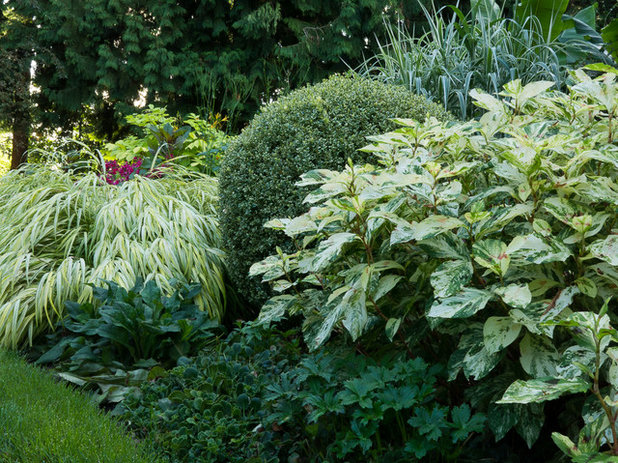
Le jardinet
1. Use restraint when it comes to color. Mixing patterns is one thing, but having lots of wild colors at the same time really would be a bit much — rather like Grandma’s crazy quilt. This border features shrubs and perennials in a soothing mix of soft, creamy yellow and midgreen. In fact, it is the color palette that initially draws your attention to this partially shaded area, rather than any one plant.
2. Vary the form. Notice how all the key plants here are different shapes. The boxwood is neatly trimmed into a sphere, while the grass resembles a cascading waterfall; the knotweed has an upright, open shape; and the saxifrage hugs the ground. This adds subtle interest so our focus again is pulled away from the different types of variegation in the leaves of each plant.
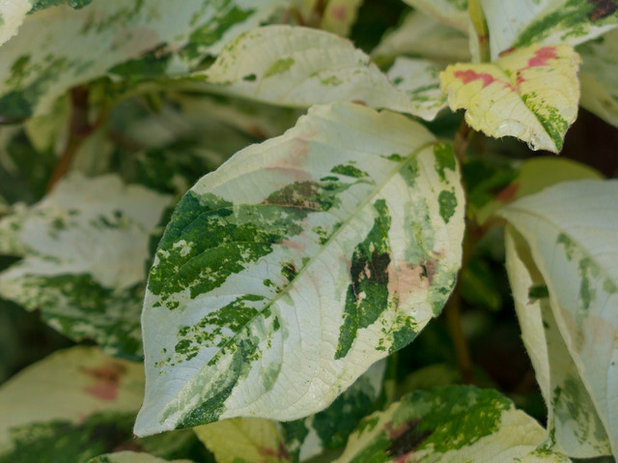
Le jardinet
3. Vary the leaf texture as well as the pattern. Painter’s Palette knotweed (
Persicaria virginiana ‘Painter’s Palette’)
has bold leaves wildly splashed and splattered with green, cream and pink. With age the leaves develop a darker chevron across the middle. Painter’s Palette is clearly the star in this combination.
Botanical name: Persicaria virginiana ‘Painter’s Palette’ (syn.
Tovara virginiana ‘Painter’s Palette’)
Origin: The species is native to the eastern U.S. and Asia, but Painter’s Palette is a garden variety.
Where it will grow: Hardy to -30 degrees Fahrenheit (USDA zones 4 to 8; find your zone)
Water requirement: Average
Light requirement: Partial shade to full sun
Mature size: 2 feet tall and wide but has a spreading habit
When to plant: Spring or fall
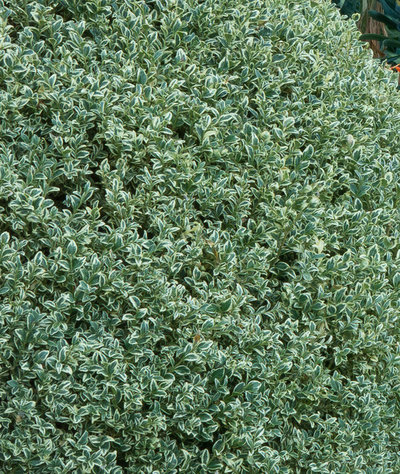
Le jardinet
In contrast to the bold leaves of the knotweed, this
variegated boxwood has much smaller, round, green leaves with a distinct creamy margin.
Rather than competing visually with the knotweed, the boxwood creates a soft haze of color that actually enhances and showcases the larger, showier knotweed. It is a solid backdrop, and clipping it into a sphere has reenforced its status.
Botanical name: Buxus sempervirens ‘Variegata’
Origin: Common boxwood is believed to be a native of England.
Where it will grow: Hardy to -20 degrees Fahrenheit (zones 5 to 9
)Water requirement: Average
Light requirement: Partial shade to full sun
Mature size: 5 to 8 feet tall and wide
When to plant: Spring or fall
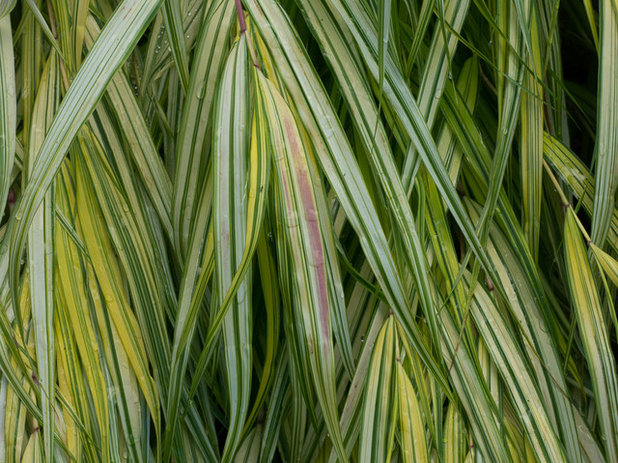
Le jardinet
Japanese forest grass adds stripes to this combination with overlapping ripples of finely textured blades. The pattern is distinct yet quiet.
Having the boxwood sphere separating the two looser shapes adds a sense of order to the playful tapestry.
Botanical name: Hakonechloa macra ‘Aureola’
Origin: Asia
Where it will grow: Hardy to -30 degrees Fahrenheit (zones
4 to 9)
Soil requirement: Moisture retentive
Light requirement: Shade to full sun
Mature size: 2 feet tall and 3 feet wide
When to plant: Spring or fall
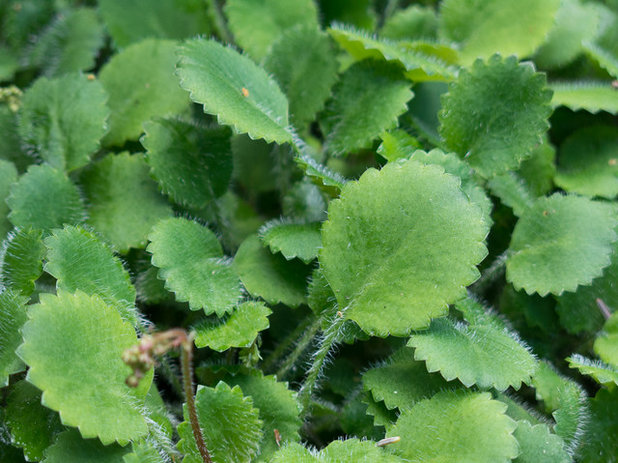
Le jardinet
4. Use a solid color to frame the scene. Several plants with simple green leaves have been used to edge the colorful trio, including this round-leaved saxifrage. Its medium-size serrated leaves are woven tightly together and will quickly form a carpet beneath more colorful border companions. In spring and early summer, white flowers are held high on wiry stems
Botanical name: Saxifraga rotundifoliaOrigin: Southern Europe and Southeast Asia
Where it will grow: Hardy to 0 degrees Fahrenheit (zones 7 to 10)
Water requirement: Average
Light requirement: Partial shade
Mature size: Less than 12 inches tall, with a spreading habit
When to plant: Spring or fall
See more planting ideas





